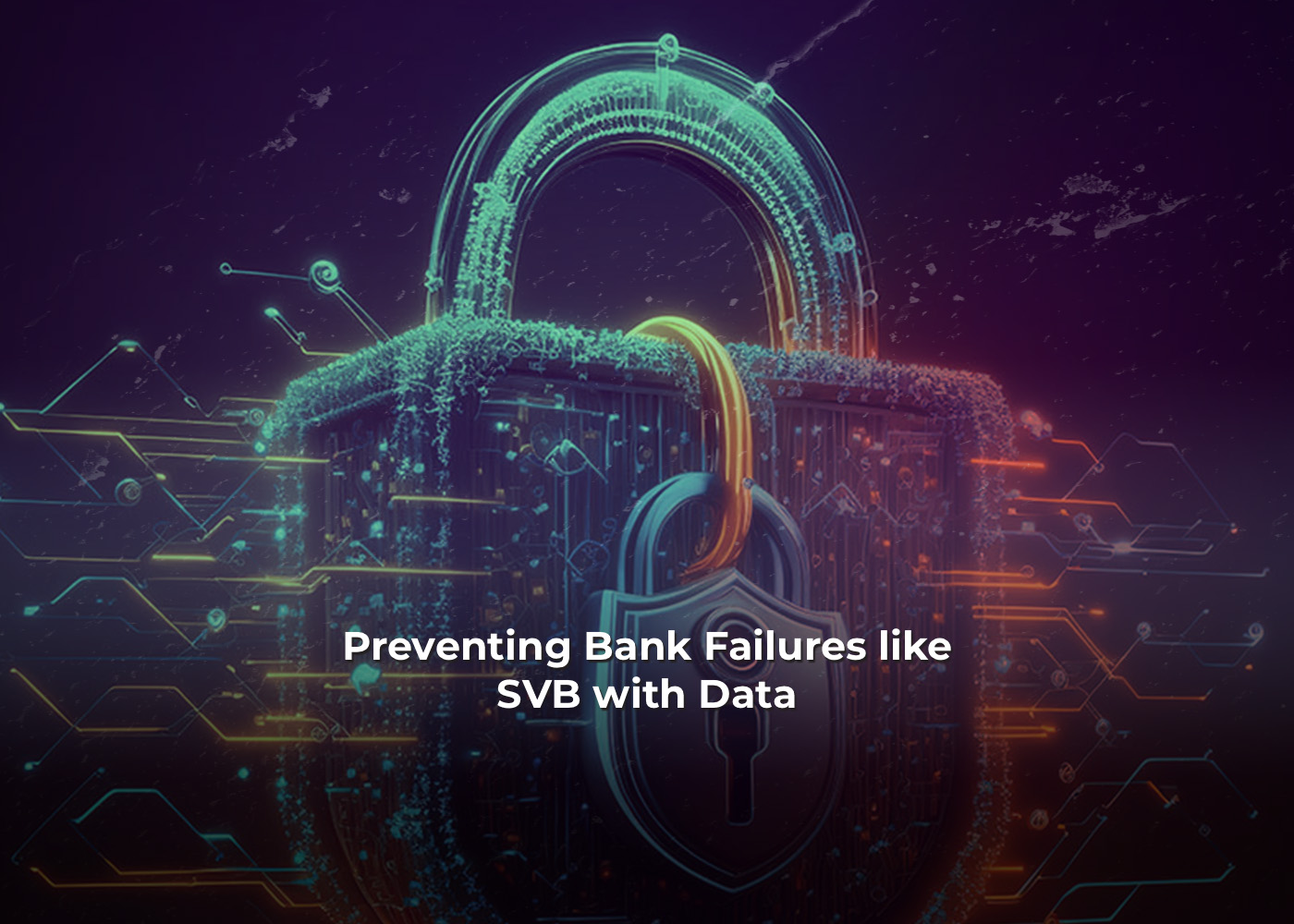Preventing Bank Failures like SVB with Data
The recent bank failures associated with funding technology companies followed by the subsequent failures of two other American banks within a span of less than two months has reverberated across the global economy impacting regions as far reaching as Europe and Asia.

The recent bank failures associated with funding technology companies followed by the subsequent failures of two other American banks within a span of less than two months has reverberated across the global economy impacting regions as far reaching as Europe and Asia.
The bank failure of Silicon Valley Bank which is the formerly the sixteenth largest lending institution in the United States triggered a surge of customers hastily withdrawing billions of dollars in mere hours driven by concerns for their financial security.
This sense of unease prompted American regulatory bodies to assume control of two medium sized banks namely Signature Bank and First Republic, while authorities in Europe were compelled to intervene in the troubled Swiss behemoth Credit Suisse. This turbulent period also witnessed a sharp decline in the stock prices of numerous financial institutions accompanied by substantial funds being shifted away from firms perceived as high-risk.

The Impact of BankFailures Is Small in Asia
Although the impact on Asia has been relatively limited the rapid succession of bank failures is currently unsettling global financial markets and igniting discussions about the potential ramifications of such failures on financial regulations in Asia.
Martim Rocha, the Global Director of Risk Business Consulting at the SAS Institute emphasized the significance of identifying the underlying causes that could have enduring implications in the Asian financial services sector.
According to Martim the recent instances of bank failures, such as the bank failure of Silicon Valley Bank, have been attributed to a range of factors including mismanagement, fraudulent activities, and inadequate practices in risk management.
These bank failures not only pose a threat to the customers directly affected but also to other financial institutions and businesses that may become vulnerable to fraud, scams, and phishing attacks. Martim argued for the establishment of a culture of risk awareness among financial institutions and their clients emphasizing the optimization of capital and liquidity and the fulfillment of regulatory requirements as crucial measures to mitigate such threats.




